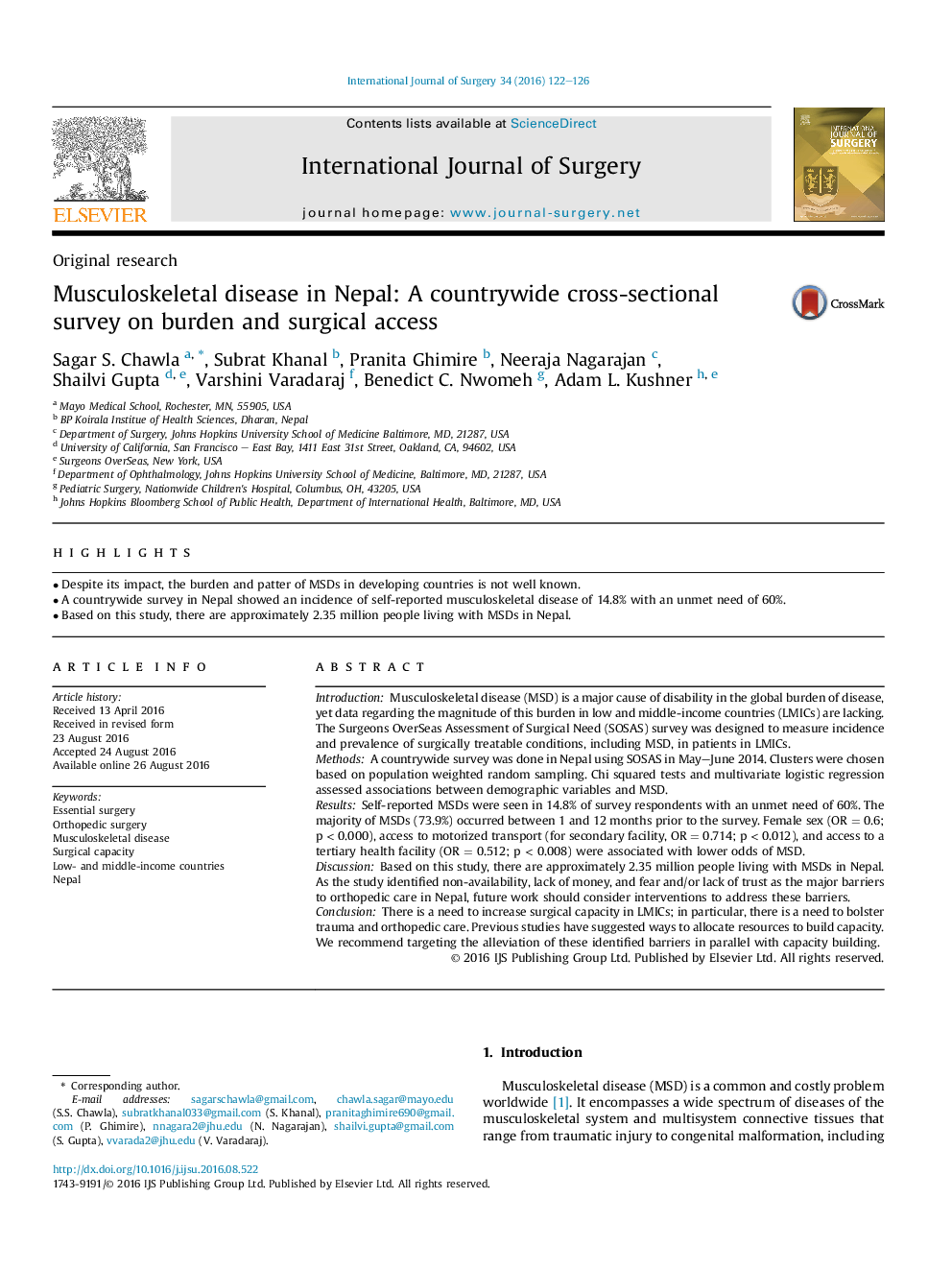| کد مقاله | کد نشریه | سال انتشار | مقاله انگلیسی | نسخه تمام متن |
|---|---|---|---|---|
| 4285277 | 1611951 | 2016 | 5 صفحه PDF | دانلود رایگان |
• Despite its impact, the burden and patter of MSDs in developing countries is not well known.
• A countrywide survey in Nepal showed an incidence of self-reported musculoskeletal disease of 14.8% with an unmet need of 60%.
• Based on this study, there are approximately 2.35 million people living with MSDs in Nepal.
IntroductionMusculoskeletal disease (MSD) is a major cause of disability in the global burden of disease, yet data regarding the magnitude of this burden in low and middle-income countries (LMICs) are lacking. The Surgeons OverSeas Assessment of Surgical Need (SOSAS) survey was designed to measure incidence and prevalence of surgically treatable conditions, including MSD, in patients in LMICs.MethodsA countrywide survey was done in Nepal using SOSAS in May–June 2014. Clusters were chosen based on population weighted random sampling. Chi squared tests and multivariate logistic regression assessed associations between demographic variables and MSD.ResultsSelf-reported MSDs were seen in 14.8% of survey respondents with an unmet need of 60%. The majority of MSDs (73.9%) occurred between 1 and 12 months prior to the survey. Female sex (OR = 0.6; p < 0.000), access to motorized transport (for secondary facility, OR = 0.714; p < 0.012), and access to a tertiary health facility (OR = 0.512; p < 0.008) were associated with lower odds of MSD.DiscussionBased on this study, there are approximately 2.35 million people living with MSDs in Nepal. As the study identified non-availability, lack of money, and fear and/or lack of trust as the major barriers to orthopedic care in Nepal, future work should consider interventions to address these barriers.ConclusionThere is a need to increase surgical capacity in LMICs; in particular, there is a need to bolster trauma and orthopedic care. Previous studies have suggested ways to allocate resources to build capacity. We recommend targeting the alleviation of these identified barriers in parallel with capacity building.
Journal: International Journal of Surgery - Volume 34, October 2016, Pages 122–126
